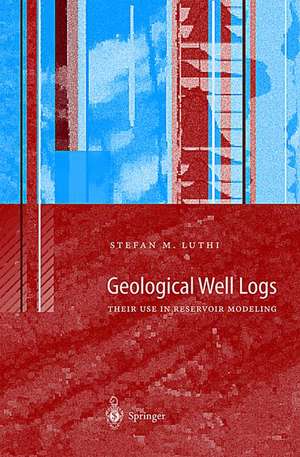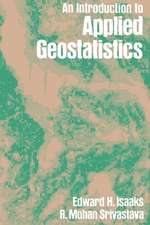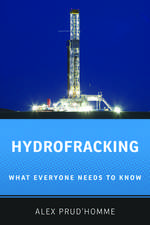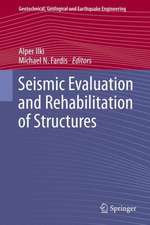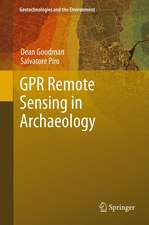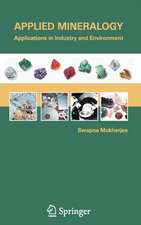Geological Well Logs: Their Use in Reservoir Modeling
Autor S. Luthien Limba Engleză Hardback – 9 apr 2001
Preț: 649.39 lei
Preț vechi: 763.99 lei
-15% Nou
Puncte Express: 974
Preț estimativ în valută:
124.26€ • 130.07$ • 103.42£
124.26€ • 130.07$ • 103.42£
Carte tipărită la comandă
Livrare economică 31 martie-14 aprilie
Preluare comenzi: 021 569.72.76
Specificații
ISBN-13: 9783540678403
ISBN-10: 3540678409
Pagini: 388
Ilustrații: XII, 373 p.
Dimensiuni: 155 x 235 x 26 mm
Greutate: 0.67 kg
Ediția:2001
Editura: Springer Berlin, Heidelberg
Colecția Springer
Locul publicării:Berlin, Heidelberg, Germany
ISBN-10: 3540678409
Pagini: 388
Ilustrații: XII, 373 p.
Dimensiuni: 155 x 235 x 26 mm
Greutate: 0.67 kg
Ediția:2001
Editura: Springer Berlin, Heidelberg
Colecția Springer
Locul publicării:Berlin, Heidelberg, Germany
Public țintă
ResearchDescriere
When I joined Schlumberger in 1982 I was surprised to find very few geologists in the company, and the few there were worked more as log analysts than geol ogists. The reason for this became soon clear to me: Except for the dipmeter there was no tool, and no other service, that was considered "geological". Schlumber ger geologists were supposed to work with dipmeters, and, if they had a taste for it, the natural gamma-ray spectroscopy logs. It turned out that my timing was fortunate. At Schlumberger's research center, in Ridgefield, Connecticut, a prototype electrical imaging tool had been designed, and after having spent three years in the Middle East I was transferred there. The first field test results were just coming in, and the images were startling. We could see geological details that nobody had ever seen from a log: cross-beds, unconformities, pebbles, fractures, folds, faults. No cores were needed to confirm the reality of these data; they were too real to be artifacts.
Cuprins
1 Introduction.- 1.1 Overview.- 1.2 A Brief History of Logging.- 1.3 The Petrophysical Approach.- 2 Geological Measurements.- 2.1 Dipmeter.- 2.2 Electrical Borehole Imaging.- 2.3 Acoustic Borehole Imaging.- 2.4 Density Borehole Imaging.- 2.5 Optical Borehole Imaging.- 2.6 Nuclear Magnetic Resonance Logging.- 2.7 Nuclear Spectroscopy Logging.- 2.8 Paleomagnetic Logging.- 2.9 Core Sampling.- 3 Applications and Case Studies.- 3.1 Structural Modeling.- 3.2 Bedding and Reservoir Zonation.- 3.3 Fractured Reservoirs.- 3.4 Well Correlation.- 3.5 Geological Drilling.- Conclusions.- Figure Credits.- Abbreviation Index.
Textul de pe ultima copertă
Well logging has come a long way from the simple electrical devices of the early years. Today's tools are not only much more accurate but much more diverse in their applications. Among these are tools that characterize geological properties of rocks in the borehole in a way that was previously only possible with oriented cores. Thus, borehole imaging, nuclear spectroscopy, nuclear magnetic resonance, and paleomagnetic logging provide precise information about bedding, mineralogy, texture, and age of the rocks traversed by a borehole. Many of these logs can not only be acquired in the traditional "wireline" mode, but also in logging-while-drilling mode where the sensors are placed directly behind the drill bit, and the measurements are transmitted in real-time to the surface. Combined with new technology to drill deviated wells, the geoscientist now has tools which allow him to characterize and develop reservoirs more accurately than ever. This book, written for researchers, graduate students and practising geoscientists, documents these techniques and illustrates their use in a number of typical case studies.
Caracteristici
Emphasis is laid on the geological application rather than the tool design
Complete overview over old and new techniques
Complete overview over old and new techniques
